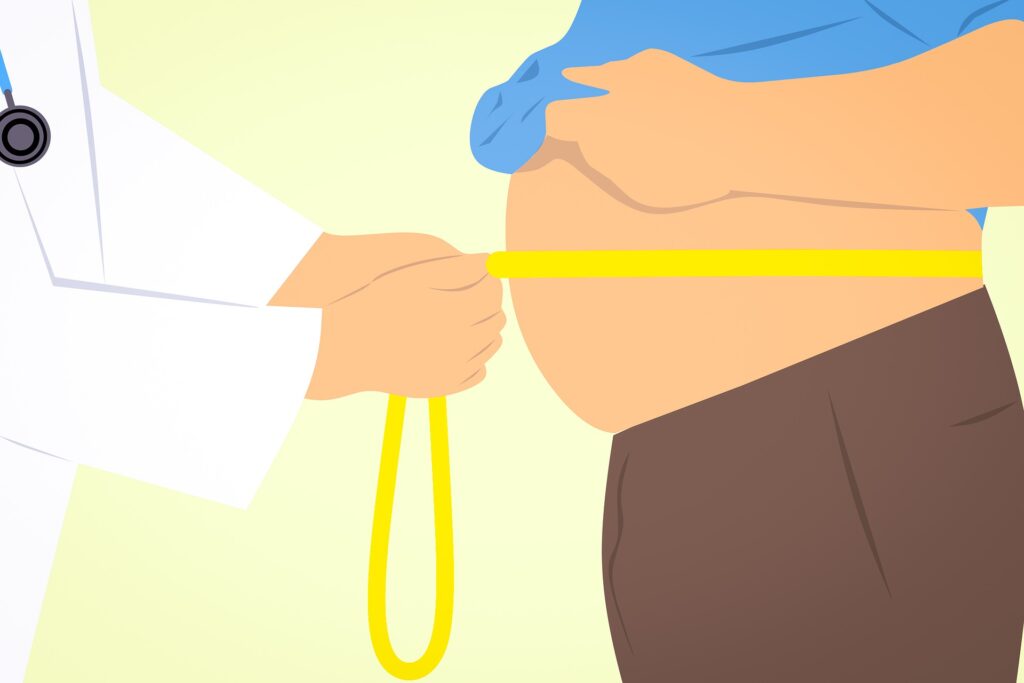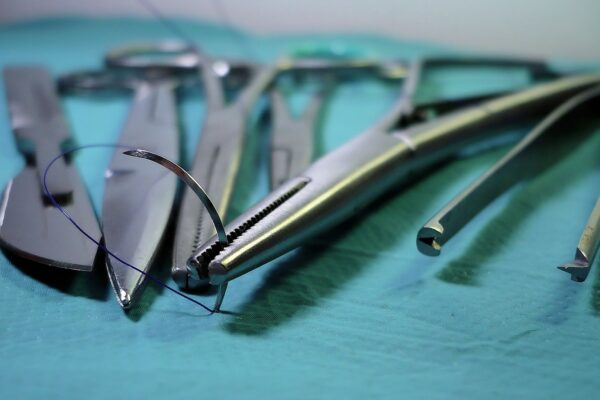How To Get Rid of Apron Belly. Eliminate Apron Stomach

Weight loss can be an effective way to reduce the amount of excess fat that contributes to an apron belly. When an individual loses weight, their body will naturally begin to burn fat from various areas, including the lower abdomen where the apron belly is located. Weight loss may not always eliminate an apron belly, especially in cases where the skin has stretched significantly or where there has been a significant loss of muscle mass.
What Is an Apron Belly?
An apron belly, also known as a panniculus, is a term used to describe a type of abdominal fat distribution in which excess fat accumulates in the lower abdomen and hangs down over the pubic area like an apron. This can result in a bulging and sagging appearance of the belly.
Apron belly is most commonly associated with obesity, but it can also be caused by other factors such as pregnancy, significant weight loss, or ageing. In some cases, an apron belly can cause physical discomfort or skin irritation due to the excess skin and fat rubbing against clothing or other surfaces.

Treatment options for apron belly typically involve lifestyle changes such as weight loss through a healthy diet and exercise, or surgical interventions such as abdominoplasty (also known as a tummy tuck), which involves removing excess skin and fat from the abdomen. (1)
Discomforts Caused by Apron Belly
An apron belly can cause discomfort in several ways.
One common way is due to the extra weight and pressure on the lower back, hips, and legs. The excess weight in the lower abdomen can put additional strain on the muscles and joints in these areas, leading to pain and discomfort. This can be especially uncomfortable in hot or humid weather, where sweat can exacerbate the problem.
Another way can be, an apron belly can also interfere with daily activities such as bending, walking, or standing for extended periods. The extra weight and bulk in the lower abdomen can make it difficult to move comfortably, and in some cases, even impact breathing.
The weight of the apron belly can put a strain on the lower back, leading to back pain. The weight and bulk of the apron belly can make it difficult to move around, especially when exercising or performing physical activities. In severe cases, the size and weight of an apron belly can make it challenging to reach and clean the area, leading to hygiene issues.
How To Curb Discomforts of Apron Belly
An apron belly can cause discomfort, but there are ways to help alleviate these symptoms. Here are some tips for managing discomfort caused by an apron belly:
Wear Comfortable Clothing. Tight clothing can rub against the skin and irritate it, so it’s important to choose clothing that is comfortable and not too tight. Loose-fitting clothing can also help to provide more room for the apron belly and reduce any rubbing or chafing.
Maintain good hygiene. It’s important to keep the area under the apron belly clean and dry to reduce the risk of infections or rashes. Use gentle soap and water to clean the area and then pat it dry with a soft towel.
Exercise regularly. Exercise can help to improve overall health and fitness, and can also help to reduce the size of the apron belly. Low-impact activities like walking, swimming, and cycling can be beneficial, as they are less likely to put a strain on the lower back or other joints.
Practice good posture. Good posture can help to alleviate pressure on the lower back and reduce back pain. Stand up straight, pull your shoulders back, and engage your core muscles to help support your spine.
Use a support garment. Specialized support garments can help to lift and support the apron belly, reducing discomfort and providing a more comfortable fit for clothing.
Consider weight loss. Losing weight can help to reduce the size of the apron belly and improve overall health. A healthy diet and regular exercise can help to achieve weight loss goals.
Use cushions. Sitting for long periods can be uncomfortable with an apron belly, but cushions and pillows can help to provide additional support and cushioning.
Take these steps to manage any discomfort caused by an apron belly to improve your quality of life and get rid of an apron belly.
How To Lose Apron Belly Fast
Losing belly fat can be a challenge, but it’s not impossible. Here’s a comprehensive guide to help you lose weight and achieve a flatter stomach.
Watch Your Calorie Intake
Weight loss is all about creating a calorie deficit, which means burning more calories than you consume. The key to achieving this is to track your daily calorie intake and make adjustments as necessary. A good starting point is to aim for a diet containing around 1,200 to 1,500 calories per day, and adjust based on your age, gender, weight, and activity level. When you start counting your everyday calorie consumption, it will give you better insight into how much you have done and how much more is required.
People who don’t count calories regularly, mostly resulted in overconsumption of calories or calorie deficit. These situations may create big barriers to their weight loss goal. (2)
Eat a Balanced Diet
Eating a balanced diet is essential for weight loss and overall health. Focus on eating plenty of fruits, vegetables, and whole grains. Avoid processed foods, added sugars, and saturated and trans fats. These foods are high in calories and can lead to weight gain.

Choose whole foods. Whole foods like fruits, vegetables, lean proteins, and whole grains are packed with nutrients and can help to keep you feeling full and satisfied. Try to avoid processed foods that are high in sugar, salt, and unhealthy fats.
Focus on healthy fats. Not all fats are bad for you! Healthy fats like those found in avocados, nuts, seeds, olive oil, and fatty fish like salmon can help to improve overall health and reduce inflammation.
Incorporate fibre. Foods that are high in fibre, like fruits, vegetables, and whole grains, can help to promote feelings of fullness and can also help to regulate digestion.
Small portion sizes. Even healthy foods can contribute to weight gain if consumed in large quantities, so it’s important to pay attention to portion sizes.
Incorporate More Physical Activity
Regular exercise is a key component of weight loss. Make a goal for a minimum of 30 minutes of moderate-intensity exercises. For example, brisk walking, cycling, or jogging, every day. You can also add resistance training, such as weightlifting, to your routine to build muscle and increase your metabolism.
Burning Calories. Regular exercise can help to burn calories, which can contribute to a calorie deficit that helps to reduce overall body fat. When you burn more calories than you consume, your body will begin to use stored fat as an energy source, including the excess fat around your midsection.
Boosting Metabolism. Exercise can also help to increase your metabolism, which is the rate at which your body burns calories. This means that even when you’re not exercising, your body will continue to burn calories at a higher rate, contributing to overall fat loss. (3)
Get Enough Sleep
Sleep is important for weight loss and overall health. Aim for 7-9 hours of sleep per night and try to establish a consistent sleep schedule. Lack of sleep can lead to hormonal imbalances and increased hunger, which can make it more difficult to lose weight.
How To Lose an Apron Belly with Surgery
Abdominoplasty is a surgical procedure that is used to remove excess skin and fat from the abdomen, and to tighten the underlying muscles. This procedure can be a good option for people who have excess skin and fat around their midsection due to pregnancy, ageing, or other factors.
During the procedure, the surgeon will make an incision from hip to hip, and then lift the skin and fat away from the abdominal muscles. The excess skin and fat will be removed, and the underlying muscles will be tightened to create a smoother, flatter abdominal contour. The remaining skin will then be stretched down over the abdomen, and the incision will be closed.
The tummy tuck procedure can take anywhere from two to five hours, depending on the extent of the surgery. It is usually performed under general anaesthesia, and patients typically require a one to two-night hospital stay.

After the surgery, patients will need to wear a compression garment to support the abdomen and reduce swelling and will need to avoid strenuous physical activity for several weeks.
Some Complications Regarding Surgery
Major surgical procedure with potential risks and complications. These can include bleeding, infection, scarring, and complications with wound healing. In rare cases, patients may also experience blood clots, lung problems, or other serious complications.
While the procedure can remove excess skin and fat from the abdominal area, it is still important to maintain a healthy lifestyle to prevent the recurrence of excess weight and fat in the future. (4)
Wrap Up
In conclusion, losing an apron belly can be challenging, but it is possible with a combination of a healthy diet, regular exercise, and targeted abdominal workouts. By reducing overall body fat and toning the abdominal muscles, you can achieve a flatter and more toned midsection.



